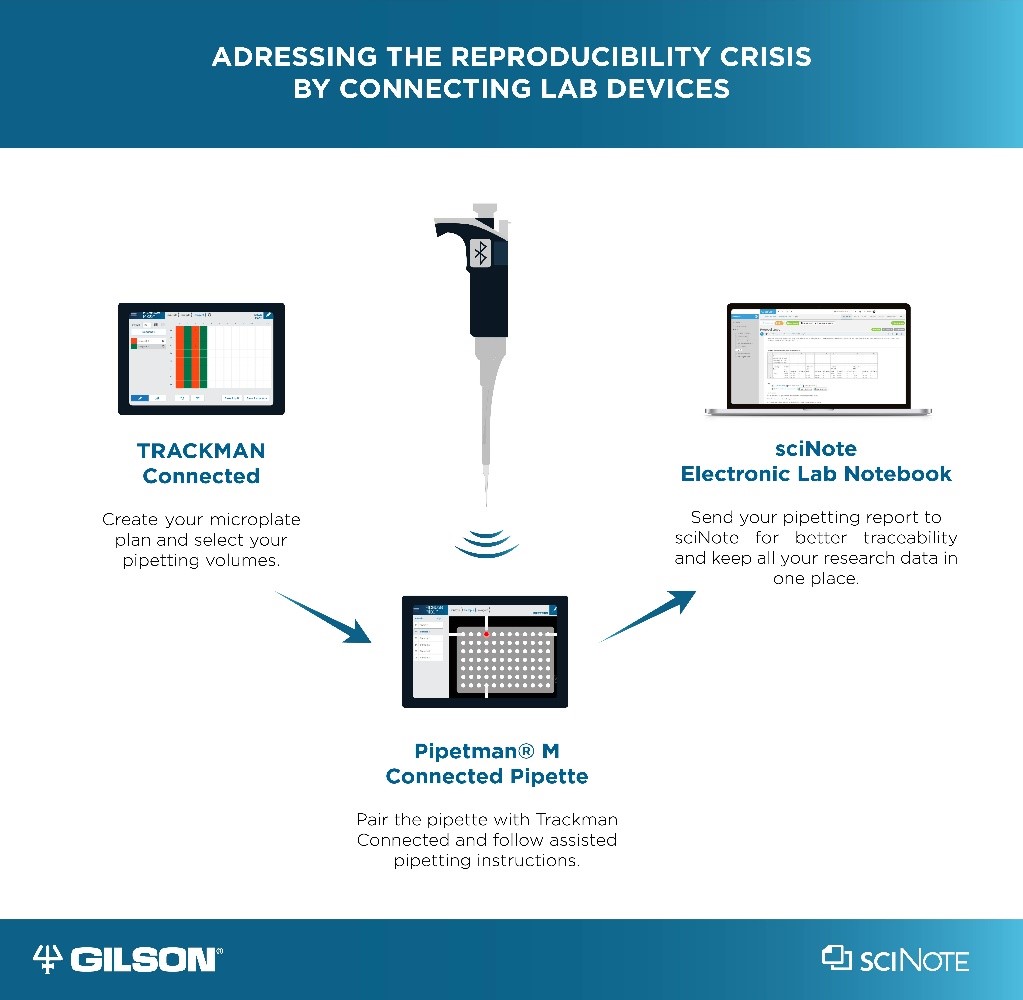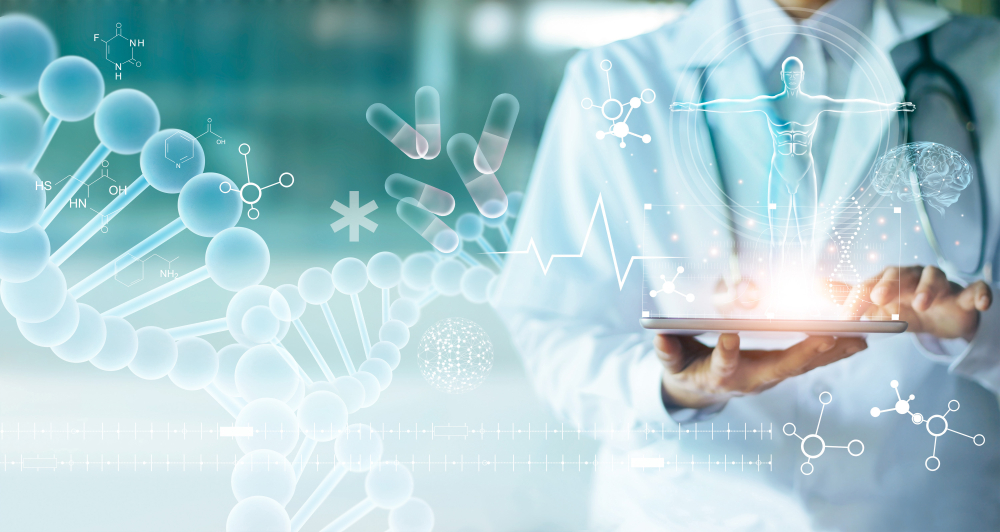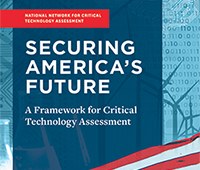There is a crisis in science right now, according to ninety percent of scientists surveyed by Nature magazine, and it pertains to one of the most important elements of scientific research: reproducibility. The ability to accurately reproduce study results is crucial because it helps to ensure that the data is correct, provides transparency, and gives the scientific world confidence in understanding exactly what was done. In a landscape in which significant percentages of scientists fail to verify peer research, and even find it challenging to reproduce their own experiments, there is a strong need for tools and technologies that can improve reproducibility.
The Internet of Things (IoT) as one solution to the reproducibility crisis. Smart, interconnected lab devices that can track and record real-time data provides researchers a mechanism to check measurements and correct technique as they run experiments. Subsequent storage in the cloud via electronic notebooks provides a permanent, transparent home for data that can be easily accessible to all lab members and collaborators. With electronic notebooks and connected lab instruments, scientists will no longer need to spend a considerable portion of their time on data management or worry about data misplacement.
Putting tradition aside
In the majority of labs, the day-to-day process of recording scientific research occurs on paper, the same way it did in the era of Leonardo Da Vinci, Charles Darwin, and Albert Einstein. While the notes and drawings of these famous scientists have been preserved and continue to inspire today, many researchers are pointing to this record-keeping tradition as one of the key issues in science’s ongoing reproducibility crisis, or the inability of many scientists to repeat the results of their peers. Several studies on the scope of the problem have revealed startling statistics: More than 70% of researchers have failed to reproduce a colleague’s experiments and more than 50% have failed to reproduce their own. While the reasons for this are complex, over 35% of irreproducibility has been attributed to manual errors in the performance of experiments and data reporting.
Outside of the lab, many researchers lead pretty tech-savvy lifestyles, where digital data can be easily backed up or accessed on any number of cloud-enabled devices. This makes the continued use of paper for recording scientific data a bit puzzling. Even Da Vinci, Darwin, and Einstein’s original notebooks now exist in digital form. The downsides of keeping a physical record of research exclusively are numerous: paper lab notebooks can be easily lost, stolen, destroyed, or altered. Though tragedies of this sort tend to be rare, recording details of experimental design and data collection or analysis are difficult and time-consuming, which can inevitably lead to unintentional recordkeeping mistakes and may explain some of the statistics cited above.
Many other industries, aside from science, require meticulous recordkeeping and several have adapted cloud-based digital equipment and devices to help with this important practice. Collectively, this equipment is called the “Internet of Things” (IoT) and can create connections between devices and the internet. Data from these devices can be uploaded to secure locations set up in the ‘cloud’ that can be accessed by authorized lab members and collaborators. While scientists in laboratories have been slow to adopt these digital innovations, some labs are ahead of the curve and have begun using the IoT to streamline their research and ensure that every detail is captured. As discussed below, these innovations, some of which are being developed into commercial products, can play a role in helping the reproducibility crisis.
Electronic lab notebooks have been around for decades, promising scientists a more foolproof way to record and store data. But many would-be users have found their interfaces overly complicated. For people who did embrace ELNs as early adopters, such as Brian Marsden, head of research informatics at the Structural Genomics Consortium (SGC), the devices have provided clear, long-lasting benefits. Because he can back through his notes in his ELN, he can tell other researchers precisely how he made a protein even a decade ago, including the protocol and reagents he used. This is particularly important for Marsden and SCG, who partner with pharmaceutical companies to investigate proteins of medical interest.
There are signs that ELNs are evolving into more user-friendly devices. One example is the SciNote Electronic Lab Notebook available for free, that many scientists find easier to use than competing devices. It offers a simple interface that allows lab members to organize their work and save a significant amount of time by creating project reports automatically. Its functionalities also encompass time stamping, audit trails, and electronic signatures that ensure the protection of the lab’s IP and enhance data security.
An ELN like SciNote can also interface with other connected devices. For instance, in addition to TRACKMAN® Connected, a tablet with an application that allows researchers to create their pipetting plans and determine volumes, Gilson makes a Bluetooth-enabled, connected pipette called PIPETMAN® M Connected. The pipette pairs with TRACKMAN Connected using Bluetooth, and records and tracks pipette performance in real-time. The protocol in TRACKMAN Connected automatically sets the pipette’s volume, allowing scientists to save time and decreasing the risk of errors. At the end of the pipetting run, a report can be automatically created as a PDF or sent to the appropriate experiment within SciNote Electronic Lab Notebook. This enables researchers to keep all their data traceable and in one place. (see figure)

Bluetooth-enabled smart pipettes can connect to an electronic lab notebook and store protocol data in one place. Source: Gilson, Inc.
Abdellatif Elm’selmi, the leader of the École de Biologie Industrielle’s Department of Molecular Biology in Cergy, France, likes using this product because it creates a map in real-time showing him where to pipette next. “The process is faster and more reliable than with a regular pipette,” said Elm’selmi in a special section published in Nature. It increases trust in daily results and will ultimately allow researchers to spend more time studying and analyzing results.”
Even autoclaves can now connect to the cloud. TetraScience has created a straight-forward monitoring system to bring the IoT to many laboratory devices. Their WiFi-enabled instrument sensors can monitor freezers, incubators, and autoclaves for a variety of parameters. Users can receive real-time notifications if any parameters (i.e. temperature, humidity, etc.) change due to instrument failure or suboptimal performance. They can also review historical data retroactively to help eliminate experimental variability. Together, this connection between equipment, notebook, and scientist can help easily track and record experimental procedures and errors, creating a permanent, transparent home that is easily accessible to other lab members and collaborators.
Conclusion
Against the backdrop of the growing reproducibility crisis, coupled with the inherent competitiveness of the scientific world, scientists need efficient solutions to manage the massive amounts of data generated by modern scientific technologies, that simply cannot be written down on paper. In this regard, connected lab devices and ELNs have the capability to empower scientists and their work by consolidating all data and protocols within one connected platform. These solutions will effectively eliminate the need to spend hours looking for data files, identifying pipetting errors, or writing reports. With a fully connected lab, many IoT advocates envision a future where ELNs could write the bulk of a scientific paper and all lab equipment could be controlled via a single, easy-to-operate platform. With less human intervention necessary for the flow of information between devices, there will be less opportunity for errors that would make reproducibility difficult.





